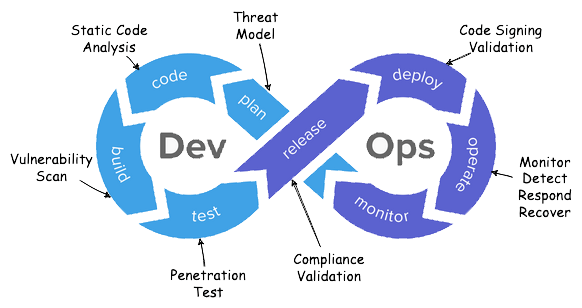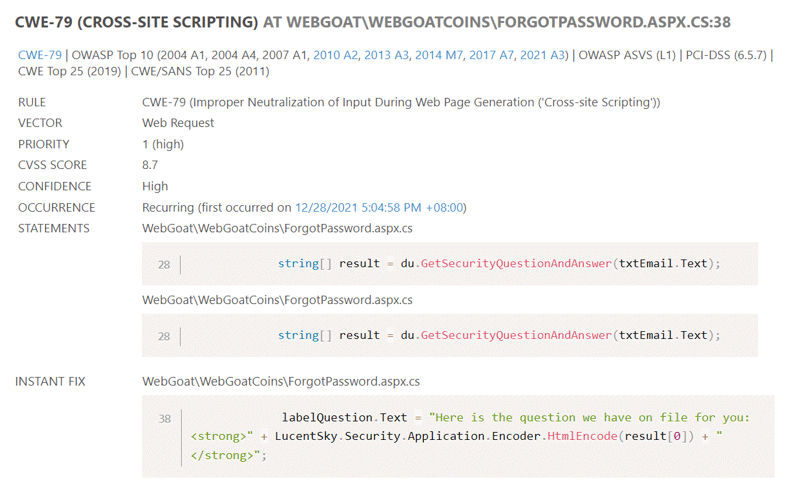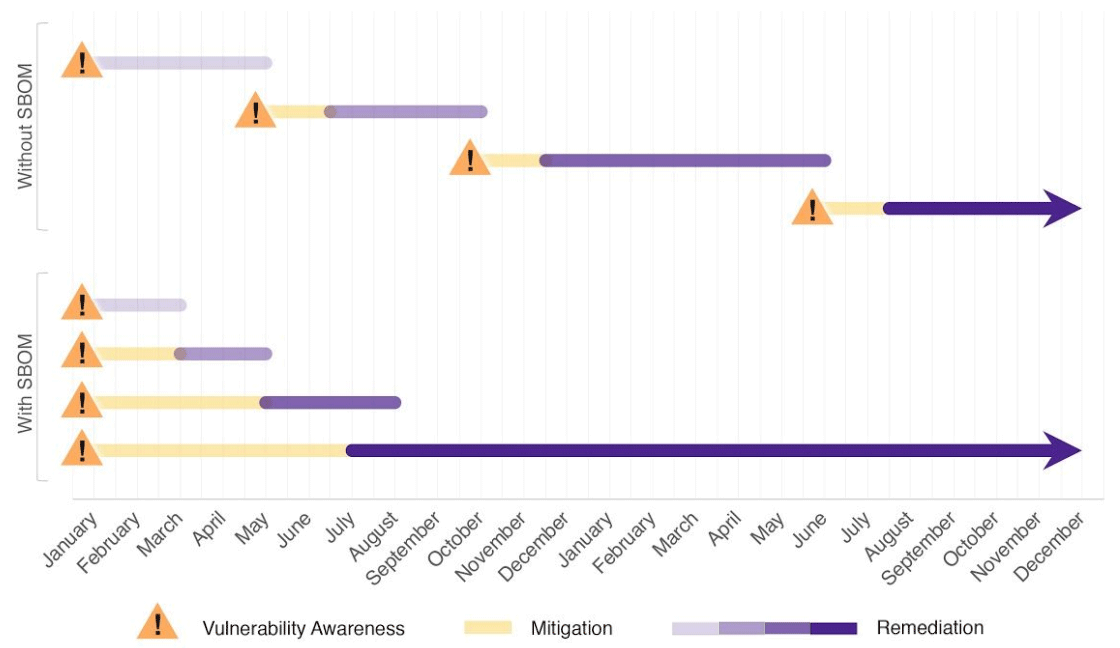Automate your way into DevSecOps with Lucent Sky AVM
DevOps empowers organizations to deploy code changes to production at blazing speed. As time-to-market becomes a key metric, development and security teams must identify and remediate security issues as quickly as possible. Automatic vulnerability remediation tools like Lucent Sky AVM help reduce mean-time-to-remediation (MTTR), making secure software development more efficient and enabling a “security at every stage” DevSecOps culture.
What is DevSecOps?
Just as DevOps combines development and operations, DevSecOps integrates security into every stage of the software development lifecycle. It’s not about adding a separate security step between development and operations, but about adopting a “shift-left” approach—embedding security early and continuously throughout the process.
At the heart of shift-left security is automation. By automating security testing, organizations can trigger scans every time code is committed or built. This enables developers to detect and remediate vulnerabilities early, without slowing down delivery.
Integrating tools like static application security testing (SAST), software composition analysis (SCA), and dynamic application security testing (DAST) into the CI pipeline helps detect vulnerabilities early, reduce mean time to remediation (MTTR), improve compliance, and support secure agile development. For teams balancing rapid delivery with regulatory requirements, automated security tools like Lucent Sky AVM are essential to a scalable DevSecOps practice.

Lucent Sky AVM in the code stage
During the development — or “code” — stage, Lucent Sky AVM can be integrated into the CI process to automatically scan code whenever changes are committed to source control. Unlike traditional SAST tools, it uses contextual analysis to deliver more accurate results with significantly fewer false positives.
Its patented automatic remediation algorithms generate “Instant Fixes” — secure, production-ready code replacements. Developers can review and apply these fixes individually or in bulk before moving on to testing.
Beyond CI integration, Lucent Sky AVM also works within popular IDEs like Visual Studio, Eclipse, and IntelliJ. This allows developers to assess and remediate vulnerabilities directly within their coding environment. Whether used in the CI pipeline or the IDE, Lucent Sky AVM helps developers identify and fix vulnerabilities as they’re introduced, ensuring only secure code moves forward in the CI pipeline.

Lucent Sky AVM in the build stage
For applications that require compilation — such as those developed with .NET, C++, or Java — Lucent Sky AVM can be integrated into the build stage of the CI pipeline. It analyzes build artifacts like .dll, .elf, .exe, and .jar files to detect security vulnerabilities in binary files.
Using hybrid analysis, Lucent Sky AVM combines source code and binary analysis to improve scan coverage and accuracy. Its remediation algorithms can even generate “Instant Fixes” to patch vulnerabilities found in binaries, allowing developers to address issues efficiently. For third-party libraries or externally developed programs without source code, it can pinpoint the exact instruction sets where vulnerabilities reside.
Since many applications introduce third-party components during the build stage, this is also an ideal point for software composition analysis (SCA). Lucent Sky AVM performs both single-level and multi-level dependency analysis across source code, binaries, and configuration files. It identifies software components and checks them against public vulnerability databases and proprietary real-time intelligence. When vulnerabilities are found, the remediation algorithms provide update guidance tailored to the application’s compatibility context, helping developers upgrade software components to secure versions with confidence.

Lucent Sky AVM in the test stage
While development teams and stakeholders conduct functional testing and validation, Lucent Sky AVM can perform security testing on the final software artifacts. In addition to verifying application security posture, it can generate attestations that support secure deployment and regulatory compliance.
Common attestations include:
- Digitally signed security testing reports: These reports detail the contents of the software artifacts, the security tests performed, and any issues discovered. They serve as audit trails for compliance.
- Software Bill of Materials (SBOM): Provided in SPDX or CycloneDX formats, SBOMs contain details of software components found in the software artifacts, such as their vendors, suppliers, identification signatures, and licenses.
These attestations are essential for meeting requirements under regulations like the EU Cybersecurity Resilience Act (CRA) and U.S. Executive Order 14028. They also provide clear, actionable insights into software composition and security postures, helping reduce the time between vulnerability awareness and remediation during cybersecurity incidents.

DevSecOps in action: a financial service success story
Balancing cybersecurity with time-to-market is a common challenge for modern development teams. However, by integrating the right automation tools into the secure software development lifecycle, organizations can accelerate software delivery without compromising security or compliance.
One major commercial bank in the APAC region, for example, had been using a traditional SAST tool since 2014 to meet regulatory requirements. However, long scan times and high false positive rates became major bottlenecks — especially after the bank’s 250-person IT department adopted DevOps practices.
During their evaluation, Lucent Sky AVM demonstrated a 40% improvement in scan speed and a 90% reduction in false positives and false negatives compared to their existing SAST tool. The DevOps team integrated Lucent Sky AVM into their CI pipelines, running scans during the code, build, and test stages. With automated vulnerability remediation in place, the bank’s IT department reduced the average time to production for code changes from two weeks to just three days.
Automated vulnerability discovery and remediation is the key to scalable DevSecOps
Lucent Sky AVM empowers teams to embed security into every stage of the SDLC, by automatically identifying and remediating vulnerabilities across source code, binaries, and third-party components.
Ready for a more efficient DevSecOps process? Get in touch to learn how Lucent Sky AVM can help your team accelerate application security.
Contact us